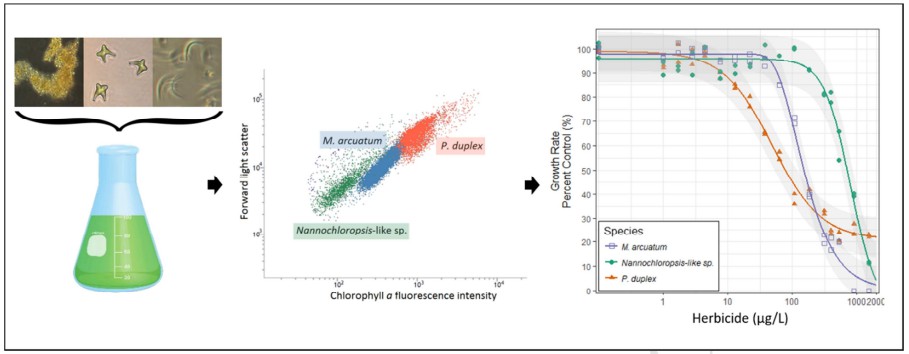Microalgae can produce a diverse range of metabolites, including some that have harmful effects on other organisms such as humans or marine fauna. Microalgae are commonly used for ecotoxicity testing due to their ease of cultivation and rapid cell division rates. Here at Lifeasible, we provide professional solutions for the bioassay of microalgae toxicity.
Microalgae are the basis of the marine ecosystem food chain, mainly composed of unicellular pelagic and benthic photosynthetic organisms. Algal cells have developed chemical strategies to communicate, defend and adapt to their environment. As a result, they are capable of producing a large number of metabolites, including those that are potentially toxic or biologically active. Microalgal toxins are secondary metabolites with a variety of compounds with different chemical structures. Of the tens of thousands of microalgae species currently known, more than 200 are considered to have harmful effects, while about 100 produce toxins. Harmful algal blooms can adversely affect marine life or human health through direct exposure to toxins or bioaccumulation of algal toxins in seafood. Over the past decade, monitoring systems have made considerable progress in optimizing the prediction of toxic algal blooms and their effects on seafood safety.
 Fig 1. Development and application of a multispecies toxicity test with tropical freshwater microalgae. (Stone S, et al., 2019)
Fig 1. Development and application of a multispecies toxicity test with tropical freshwater microalgae. (Stone S, et al., 2019)
Ecotoxicity testing of microalgae typically uses a single species of algae. However, microalgae exist in the environment as complex communities of multiple species. Lifeasible is dedicated to routine multi-species toxicity testing of microalgae. In addition, we develop protocols for bio-toxicity measurement of benthic microalgae.
We grow standard microalgae in batches in borosilicate flasks on substances and wastewater and use flow cytometry and esterase inhibition techniques to determine microalgal biotoxicity.
(1) Sampling and preparation of benthic microalgae
We collected only the first layer of sediment. Upon entering the laboratory, sediment samples were mechanically homogenized with a non-metallic spatula and freeze-pulsed by immersion in liquid nitrogen to eliminate microfauna and microbiota.
(2) Determination of biotoxicity of benthic microalgae
To increase the ecological relevance of toxicity bioassays, we offer a new toxicity test method to determine the biotoxicity of benthic microalgae.
At Lifeasible, we can quickly assist you in biotoxicity assays of tropical freshwater microalgae multispecies and benthic microalgae. We are your trusted partner in all aspects of microalgae research. If you are interested in our solutions for bioassay of microalgae toxicity, please do not hesitate to contact us.
Reference
Lifeasible has established a one-stop service platform for plants. In addition to obtaining customized solutions for plant genetic engineering, customers can also conduct follow-up analysis and research on plants through our analysis platform. The analytical services we provide include but are not limited to the following:
STU-CRISPR System Improves Plant Genome Editing Efficiency
April 19, 2024
Application of Exosomes in Facial Beauty
April 12, 2024